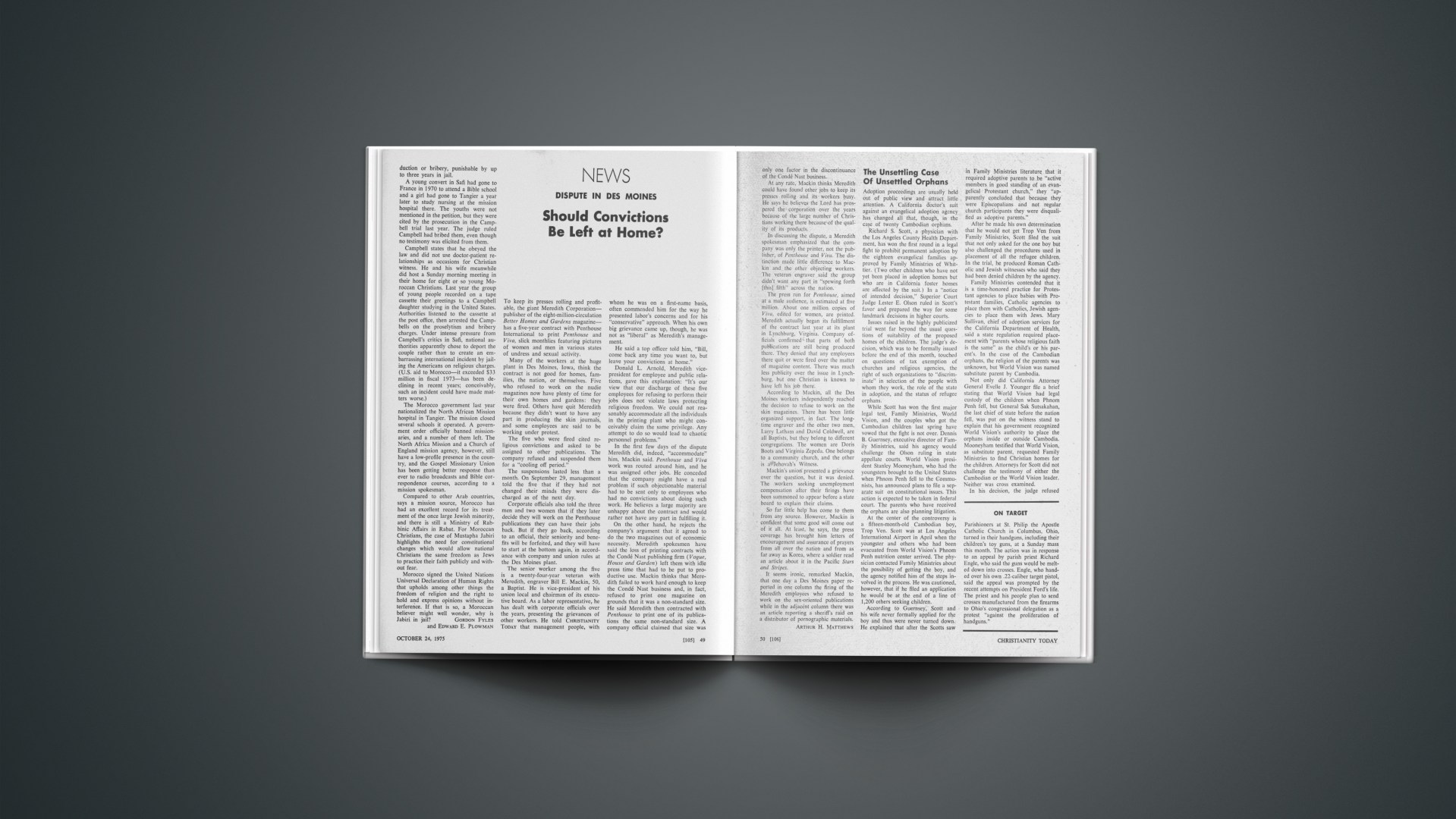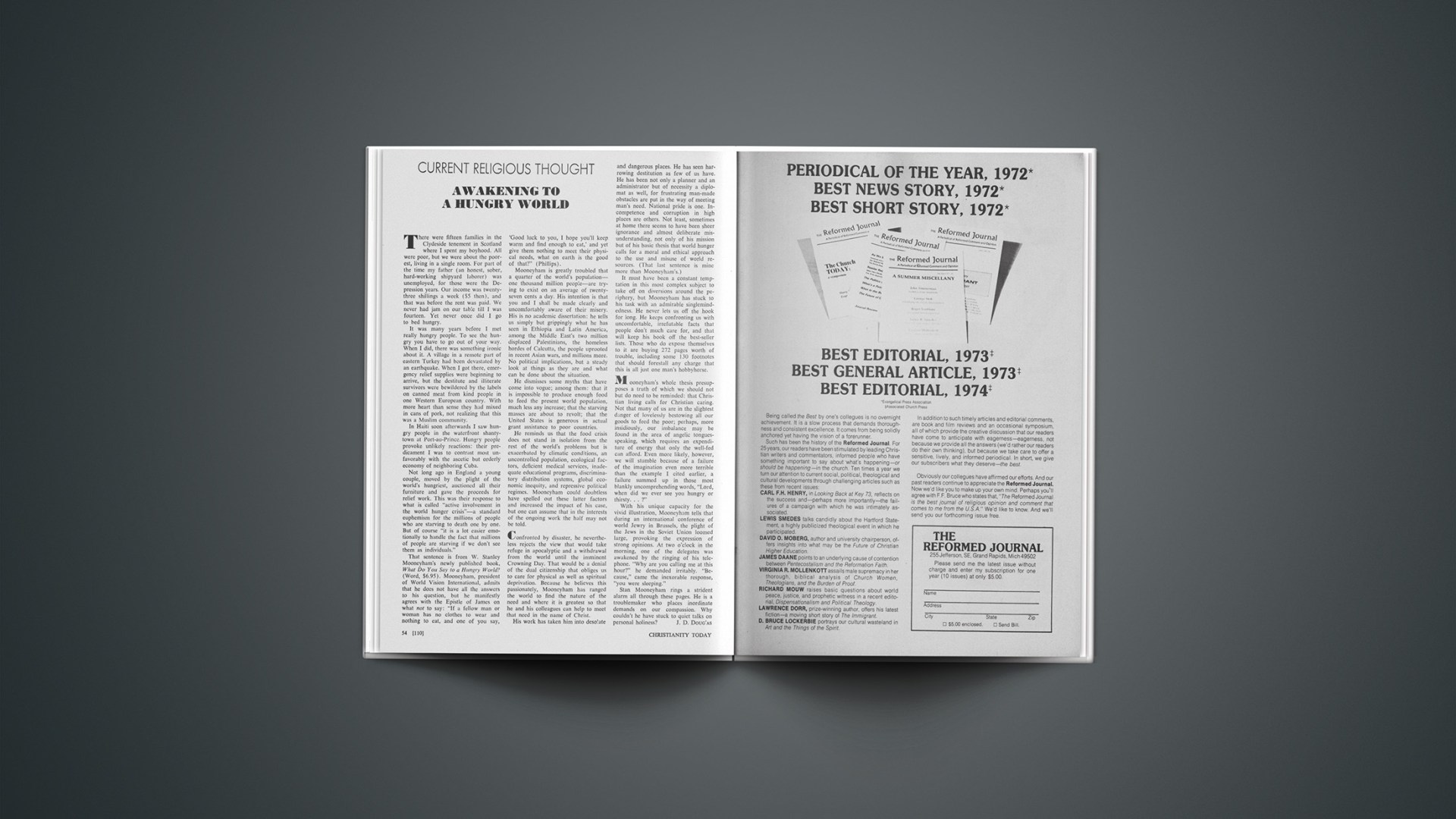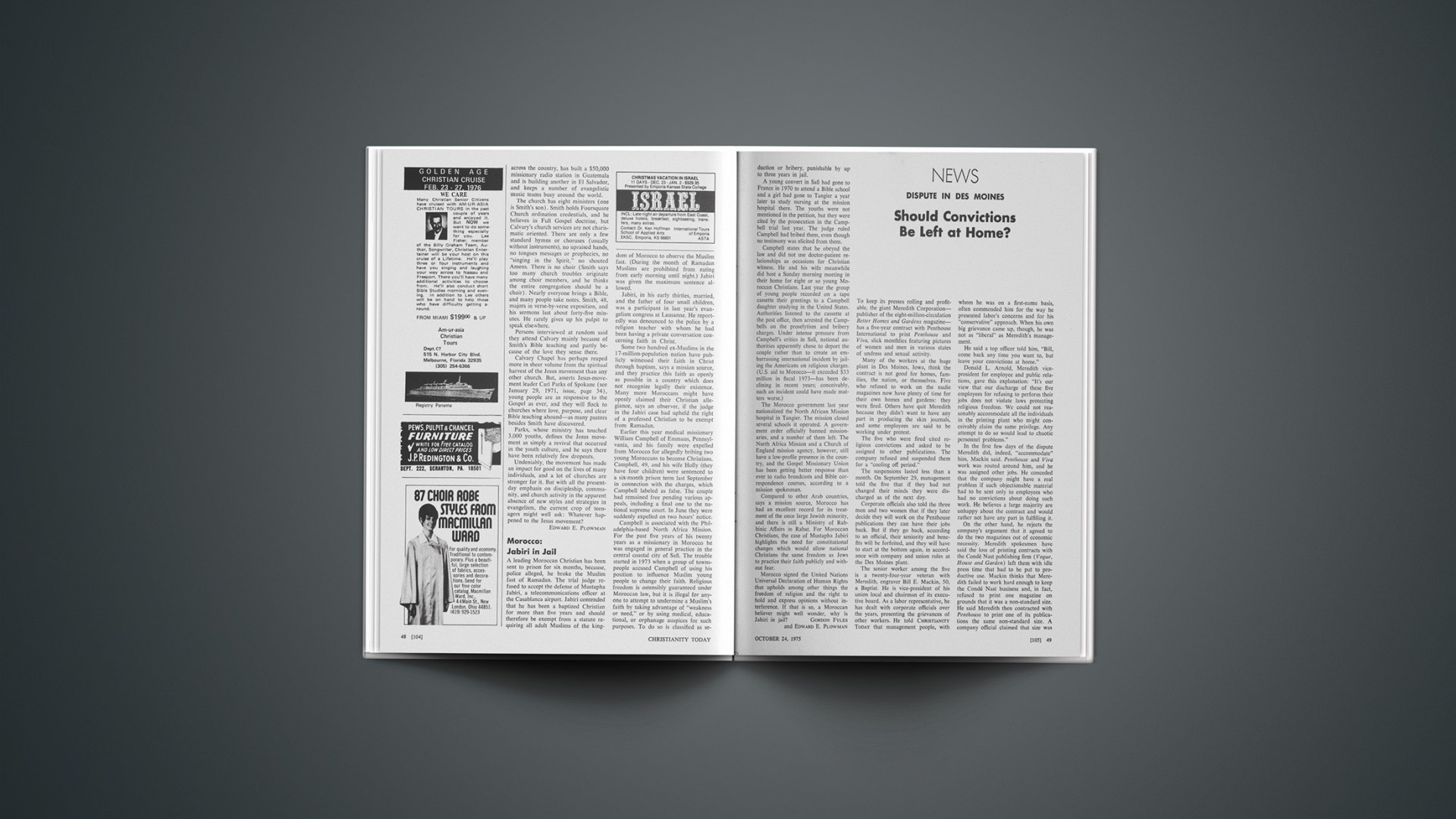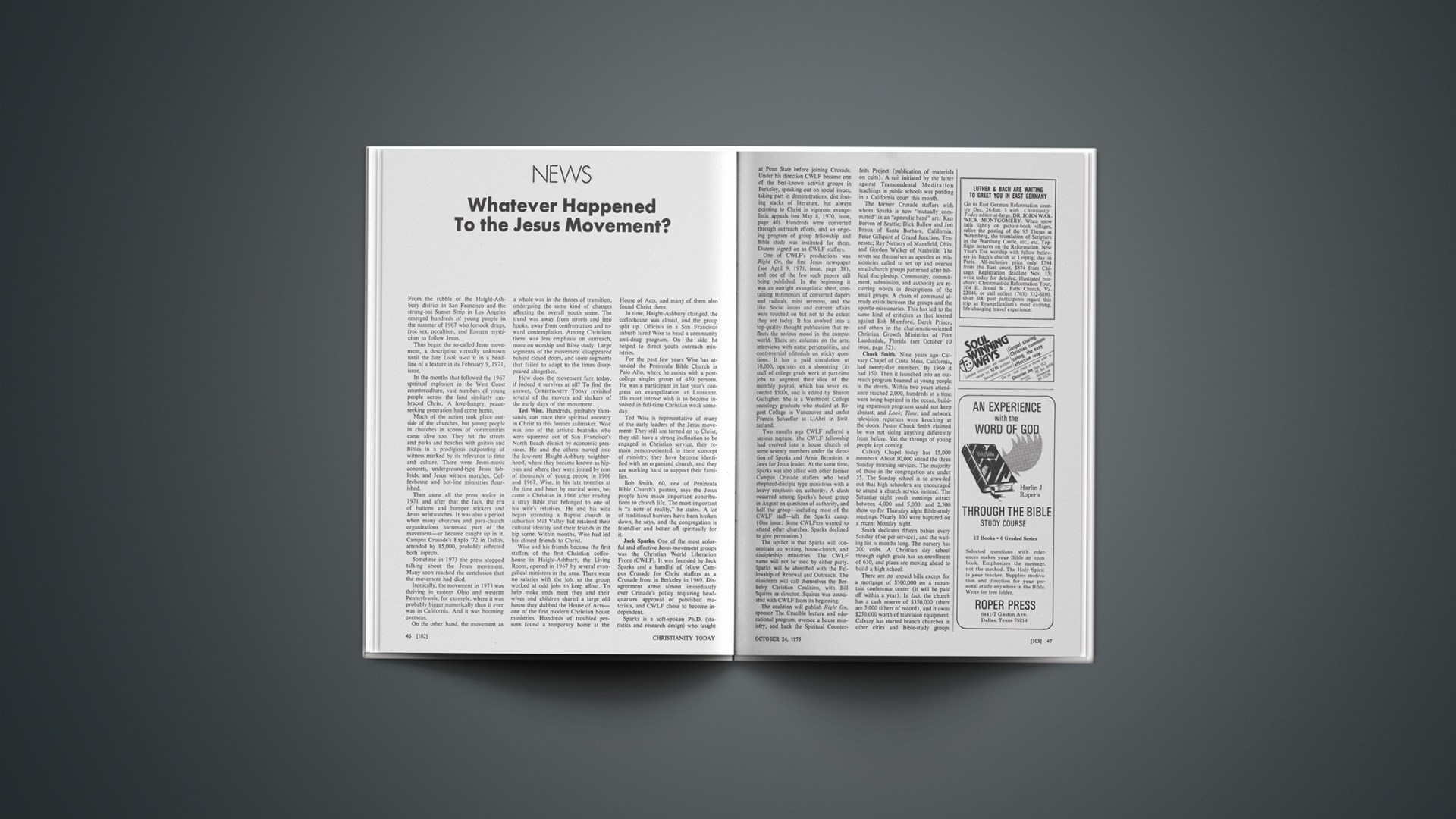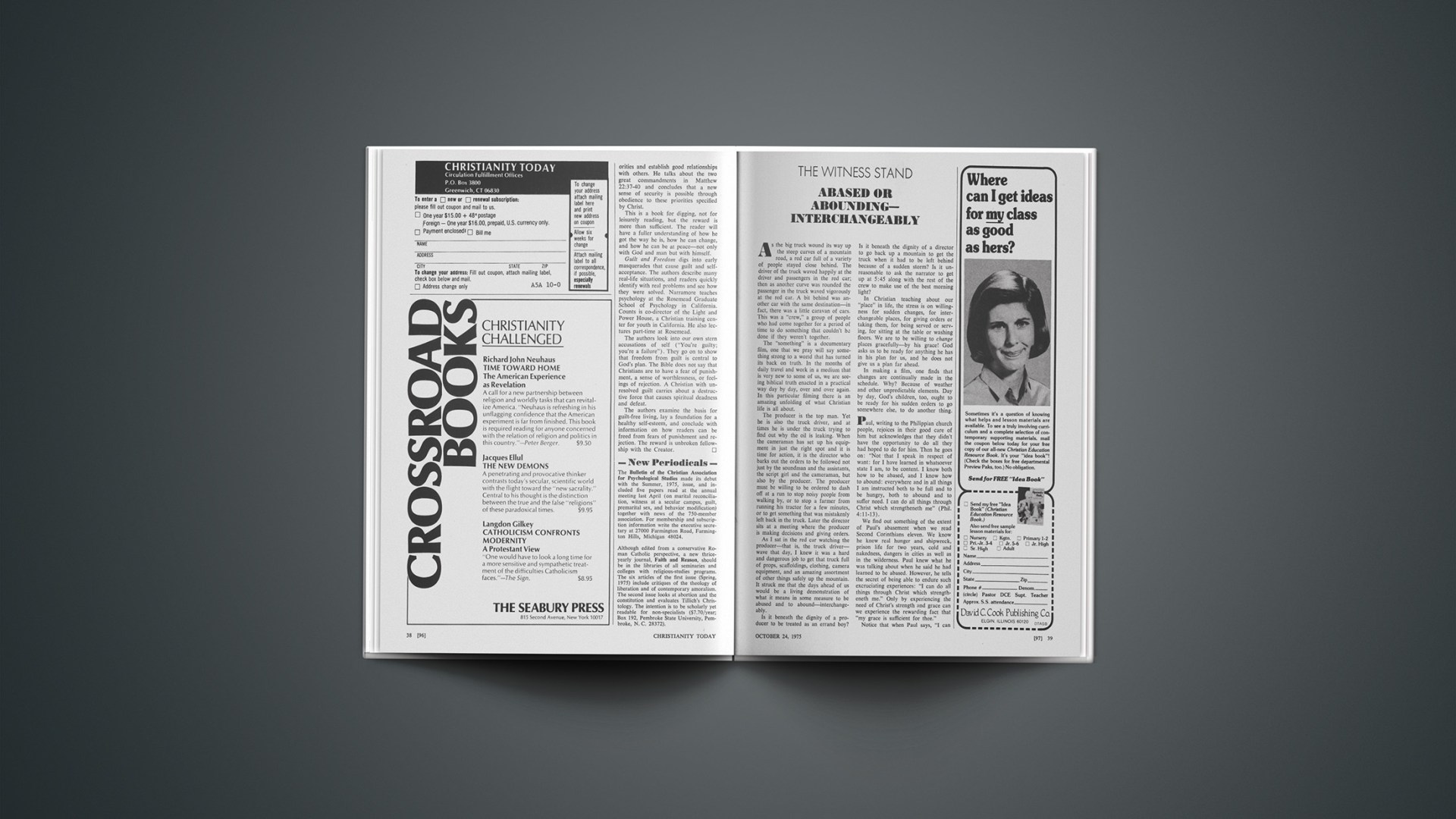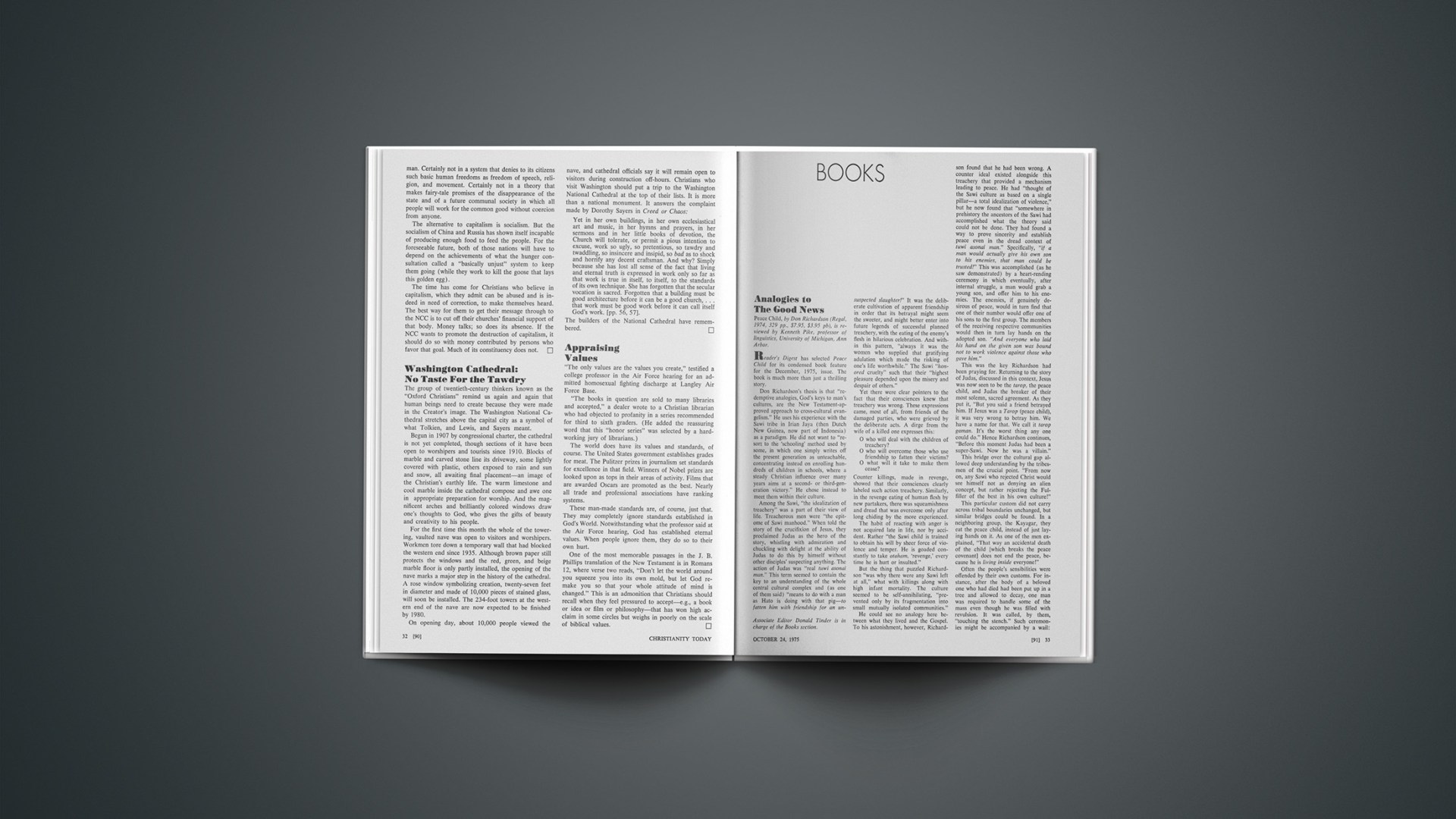Pastor, can I talk to you about college? I don’t even know whether I should go or not.”
Many young people now question seriously the values of education beyond high school. Even among counselors, the matter is not as clear-cut as it once seemed.
For about a decade—at least in the late sixties and early seventies—there was a general turning away from college in some segments of middle-class America. Some high school graduates just drifted for a year or so. It became acceptable for parents to explain, “Oh, he’s just not sure about college right now,” or “She’s spending a year trying to find herself.”
Among the factors that nourished this drifting were, probably, the unrest of the Viet Nam era, the general affluence of the American people, and changes in life style that were a part of the hippie movement. Today there seems to be a settling down among many young people, apparent on college campuses in the students’ numbers, appearance, and seriousness of purpose.
College and university campuses have generally been in the vanguard of social change. Somewhat in the United States but more so in some other countries, they have been centers of rebellion and radicalism. During the 1960s this pattern was prevalent on the American college scene. Regrettably, much of this influence was not positive—either for the general culture or for colleges as social institutions. Many citizens with reasonably moderate positions on government, morals, economics, and other areas lost much faith in higher education.
College enrollments leaped upward dramatically in the quarter century that began in 1950, and most of these new students came from the middle class. One of the most compelling drives for going to college was materialistic: a diploma was seen as a ticket to more money and “the good life.” But for many the search for the pot of gold at the end of the educational rainbow has ended in failure and frustration.
Another trend in higher education is the dominance of humanism, the belief that man is the center of the universe and that there is nothing higher than man. Cloaked in the robes of academic objectivity, this is a dangerous trend. It eats away at the Christian foundations of faith in a transcendent God, a body of revealed truth that came from God, and absolute values derived from or supported by that revelation. Pastors and Christian parents must be on guard in this crucial area.
Purveyors of everything from soda pop to sermons have been emphasizing that this is the “now” generation. “You only go around once”—grab all you can on this trip. This short-sighted “gusto-grabbing” view of life works against the idea of long, demanding preparation programs.
The educational scene today is made up of a vast number and variety of institutions. In the public sector there are huge state universities, regional universities and colleges, and the fast-growing two-year community colleges, which often stress vocational education. Each of these types is likely to have branch campuses. In the private sector there are many independent liberal arts colleges and universities, schools that formed the basic structure of higher education in the earlier period of our history. (As recently as 1950 half of the college students were enrolled in independent colleges, and over half of the degrees were granted by these private institutions.) Add to this the array of proprietary (profit-making) schools, institutes, and specialized “colleges” and the fog thickens.
As the “golden era” of available students began to wane in the late 1960s, many in the over-built, over-extended category of publicly supported institutions found themselves with a package of problems ranging from unfilled dormitories and overstaffed faculties to struggles with state legislatures for the ever-increasing budget allocations. Since this money is usually tied to enrollment, the public institutions have become locked into a recruiting battle (at the taxpayers’ expense) the likes of which has never been seen before.
Career and occupational education that produces readily marketable skills has been emphasized during our recent past. Figures showing the unemployment rate among college graduates are used as persuasive arguments against going to college. But measuring education solely by the yardstick of economic utility, though it reflects a valid concern, results in a short-sighted, limited view of life. Moreover, our rapidly changing technology tends to shorten the lifetime of many skills previously in demand and to require retraining.
Education beyond high school is available to more students than ever before. Yet the rising costs loom large as decisions are made. The rich can pay their own way and financial assistance programs abound for the poor. It is the middle-income family that suffers most from the high cost of education. More relief is available than many recognize, however. Pastors and parents of college-bound young people should carefully examine the many potential sources of financial help.
Obviously, not every young person should attend college. However, every Christian youth should think about college from the perspective of God’s will for his life. The basic Christian tenet that man is made in the image of God suggests that man’s potential should be developed as highly as possible. The mandate from God to subdue and rule over the rest of creation does not lend much support to a view of limited educational pursuit.
Stalwart Christian citizenship seems to be in short supply today. The many forms of human need, governmental defection, and moral instability in all quarters cry out for young Christians to develop their abilities to the fullest. We need many more Christians in places of leadership in our sick society. Otherwise, leadership will come in increasing degrees from those whose values, orientation, and commitments are likely to lead the society even deeper into confusion and despair.
More college-trained Christians are needed in church jobs also. Growing churches have growing needs for staff members. Many congregations go without adequate staffing in religious education, youth ministries, music, social ministries, and recreation. Others cannot even find pastors. Such needs will not be met unless more and more Christian young people hear and respond to God’s call to prepare for this kind of service.
The following questions are likely to come up when young people seek counsel about their future. “Should I go on to school at all? If so, should it be college or some specific career training in a vocational school? Is a college education really worth the money and work it requires? Will I be able to get a job afterward? What should I study? Should I go at all if I don’t know what I want to do? How can I get the money to go? What about the large college or university as compared to the small college? The community college is close to home and cheaper—isn’t it therefore better? Lots of women marry right after college and never have a career outside the home; isn’t their college training wasted then?” Christian young people have an additional question to decide: “Should I go to a Christian college?”
Without attempting to deal specifically with each of these questions, I would like to suggest some background facts that potential students and their advisors should keep in mind.
The most recent survey of the Federal Bureau of Labor Statistics shows that when people are grouped by levels of education, those with four or more years of college have by far the lowest rate of unemployment (2.9 per cent). It is true that in a time of recession and job shortage it may be hard for the person with a degree to find work within his field of specialization, but generally he is more likely to be employed with the college degree than without it.
Exploration has its place in education. The general-education phase of most professional and preprofessional programs and the heart of the liberal arts programs provide the chance for exploratory learning and a sampling of numerous fields of study. The teen-ager who does not know what he wants to do should not assume he should bypass college for this reason. Many students who think they have clear goals change these before graduation. Furthermore, many graduates find their life work in areas other than those they took their degrees in. This does not mean their degree work was of no lasting good to them. It may have developed or rounded out the mind or personality in just the right way for the other field later chosen.
As for women who after college marry, have children, and do not work outside the home: Dr. Dennis Kinlaw, the president of Asbury College, often says, “If you must choose between sending me your sons or your daughters, send me your daughters. They will be mothers of the next generation. The values of the Christian college education will be vital in that context.”
Christian young people should be encouraged to consider attending a Christian college. Primarily the Christian colleges are liberal arts institutions that offer professional and preprofessional studies in conjunction with the basic program. Some Christian students are needed to season the campus of the non-Christian school. However many more Christian students can be guided into fields of their greatest usefulness, both church-related and secular, by the influence of a Christian college.
Often the major deterrent to attending a Christian college is the cost. Tax-supported colleges generally cost less. They may, however, be masters of the “hidden cost.” The announced cost may be only tuition; “fees” or the costs of room and board may not be fully explained.
The financial-aid officer at a Christian college will help the needy student try to get aid from a variety of programs, ranging from scholarships and grants to work programs, loans, and deferred-payment options. Although Christian colleges have average costs higher than the average for tax-supported institutions, the difference is less than one might think. Every Christian student should weigh carefully the value system of the educational program he buys against the price tag in dollars.
Every college called Christian has a grave responsibility to its students, their parents and pastors, its supporters, and to Christ, whose name it bears. It’s purposes must be set on a sound theological base with definite teachings about the nature of God, the pre-eminence of Christ, and the nature and destiny of man, and with Christian views of ethics, morality, knowledge, and responsibility. The imperative to evangelize and to teach are at the heart of Christian purpose. At the same time a Christian college must be based on sound educational purposes. If it is not it will disgrace the name “Christian.”
Many years ago an eighteen-year-old asked a kindly old missionary, “How can I know God’s will for my life?” The reply was “Follow the gleam; favor the bent; and watch for the open door.” Good counsel for Christians then, good counsel for Christians now.
CHRISTOGRAPHIA XXIII
the tomato vines
still tied to their rough stakes
in november
sprawl & hang
turn yellow, brown
their leaves shrink to brittle hands
victims
of the year’s vegicide
they await the promise—
“today you will be with me”
today they are uprooted
& piled somewhere out of the way,
a last yellow blossom leaning
to catch the winter sun
faint among its roots
the blossom on the compost
reflects the coming Spring
even as its radial light
declines to dust
EUGENE WARREN







